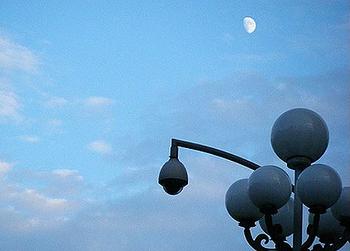
CHENGDU, China, October 22, 2018 (ENS) – China is preparing to launch the world’s first artificial moon to increase light on city streets at night. By 2020, China plans to place an illumination satellite that will act an artificial moon in orbit above Chengdu, a city of 14 million that is the capital of Sichuan province.
If the launch from the Xichang Satellite Launch Center in Sichuan succeeds, three more such objects are planned for launch in 2022, Wu Chunfeng, head of Tian Fu New Area Science Society in Chengdu, told “China Daily” Thursday.
The artificial moon will have a coating that can reflect sunlight back to Earth, similar to the way the real moon shines, he said.

The artificial moon is predicted to be eight times brighter than the real moon, Wu said.
This is due to the object’s planned orbit about 500 kilometers (300 miles) above Earth, much closer than the 380,000-km distance to the moon, Wu said.
“But this is not enough to light up the entire night sky,” he said. “Its expected brightness, in the eyes of humans, is around one-fifth of normal streetlights.”
Less light from the satellite will reach the ground if the sky is overcast. The location and brightness of the light beam can be changed, and its coverage accuracy can be adjusted to within a few dozen meters, Wu said.
The mirrors can be adjusted for luminosity and can be completely turned off when needed.
The artificial moon might replace some streetlights in the Chengdu urban area. Wu estimates Chengdu could save around 1.2 billion yuan (US$174 million) in electricity every year if the artificial moon illuminates 50 square km (19 square miles) of the city.
The extra light could be made to shine into disaster zones during blackouts, aiding relief and rescue efforts, he said.
Wu first announced Chengdu’s artificial moon project at an innovation and entrepreneurship conference in Chengdu on October 10.
Wu said, “The first moon will be mostly experimental, but the three moons in 2022 will be the real deal with great civic and commercial potential.”
The three man-made moons can take turns reflecting sunlight as they will not always be in the best position relative to the sun. Together they can illuminate an area of around 3,600 to 6,400 sq km (1,390 to 2,470 sq miles) on Earth for 24 hours.

Wu said several universities and institutes, including Harbin Institute of Technology and China Aerospace Science and Industry Corp, have evaluated the man-made moon project and given it their approval for trial and demonstration.
Critics warn of adverse physiological consequences for people and animals; the absence of regular alternations between night and day could disrupt metabolic patterns, including sleep.
“We will only conduct our tests in an uninhabited desert, so our light beams will not interfere with any people or Earth-based space observation equipment,” Wu said. “When the satellite is in operation, people will see only a bright star above, and not a giant moon as imagined.”
Copyright Environment News Service (ENS) 2018. All rights reserved.
